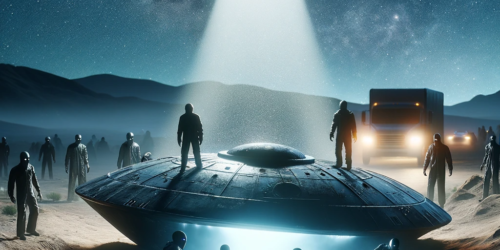The Elegant Universe: Superstrings, Hidden Dimensions, and the Quest for the Ultimate Theory

“The Elegant Universe” is a groundbreaking book written by physicist Brian Greene, which looks into the world of superstring theory and its implications for our understanding of the universe. The book attempts to bridge the gap between the esoteric concepts of theoretical physics and the general public’s understanding by using accessible language and analogies. This summary will highlight the key points and claims made in “The Elegant Universe,” mention important people featured in the book, and provide a list of other books written about it, along with brief summaries.
Key Points and Claims:
- The Search for a Unified Theory: Greene begins by discussing the quest for a unified theory that can explain all fundamental forces in the universe. He explains that scientists have long sought a single, overarching framework that could reconcile the apparent contradictions between general relativity (which describes gravity) and quantum mechanics (which explains the behavior of subatomic particles).
- The Limitations of General Relativity and Quantum Mechanics: Greene emphasizes that both general relativity and quantum mechanics have been immensely successful in describing the universe on large and small scales, respectively. However, he points out that these two theories are incompatible when applied to extreme environments like the center of a black hole or the moment of the Big Bang.
- The Introduction of Superstring Theory: Greene introduces superstring theory as a possible solution to the incompatibility issue. He explains that superstring theory posits that fundamental particles are not point-like but rather one-dimensional, vibrating strings. The different vibrations of these strings correspond to the various particles observed in nature.
- Extra Dimensions: In superstring theory, Greene elaborates that the universe consists of more than the familiar three dimensions of space and one dimension of time. In fact, the theory requires the existence of up to 11 dimensions. Most of these extra dimensions are thought to be compactified or hidden from our perception.
- The Five Different String Theories: Greene outlines the five different string theories that were developed in the 1980s and 1990s: Type I, Type IIA, Type IIB, Heterotic-O, and Heterotic-E. Each of these theories is based on different types of strings and extra-dimensional geometries.
- M-Theory: In the mid-1990s, Edward Witten proposed that the five different string theories were actually part of a more profound and unified framework called M-theory. Greene explains that M-theory provides a more comprehensive understanding of the universe and has the potential to become the elusive unified theory.
- The Role of Branes: Greene describes branes, multidimensional objects that exist within the framework of M-theory. He explains that our universe might be a three-dimensional brane situated within a higher-dimensional space.
- The Anthropic Principle and the Multiverse: Greene touches on the anthropic principle, which suggests that the fundamental constants and parameters of our universe are fine-tuned to allow for the existence of life. He discusses the possibility of a multiverse, a collection of many universes with different physical properties, as a potential explanation for this apparent fine-tuning.
Important People Mentioned in the Book:
- Albert Einstein: The renowned physicist who developed the theory of general relativity.
- Isaac Newton: A key figure in the development of classical physics and the understanding of gravity.
- Niels Bohr: A central figure in the development of quantum mechanics.
- Edward Witten: A prominent theoretical physicist who proposed M-theory.
Several books have been written about “The Elegant Universe” and related topics in physics, delving deeper into the concepts and expanding upon the ideas presented by Brian Greene. One such book is “Beyond the Elegant Universe” by David McMahon, which explores the latest developments in superstring theory and M-theory while discussing the potential implications of these theories on our understanding of the universe and the quest for a unified theory. In “The Fabric of the Cosmos: Space, Time, and the Texture of Reality,” also by Brian Greene, the author examines the nature of reality and the relationship between space and time, focusing on their connection to cutting-edge theories like superstring theory and M-theory.
Greene’s “The Hidden Reality: Parallel Universes and the Deep Laws of the Cosmos” looks into the idea of the multiverse, a concept introduced in “The Elegant Universe,” and investigates the various forms that parallel universes could take and how our understanding of these hidden realities may inform our knowledge of the cosmos. “The Superstring Mystery: A Journey into the Elegant Universe” by John Gribbin provides an accessible account of superstring theory and the quest for a unified theory, highlighting the key concepts and breakthroughs while offering a historical perspective on the development of the theory and its implications for our understanding of the universe. Lastly, Charles Seife’s “Decoding the Universe: How the New Science of Information Is Explaining Everything in the Cosmos, from Our Brains to Black Holes” examines the role of information in the universe and how it relates to the fundamental principles of physics, discussing how the concept of information may provide insights into the nature of reality and the potential connections between superstring theory and information theory.



